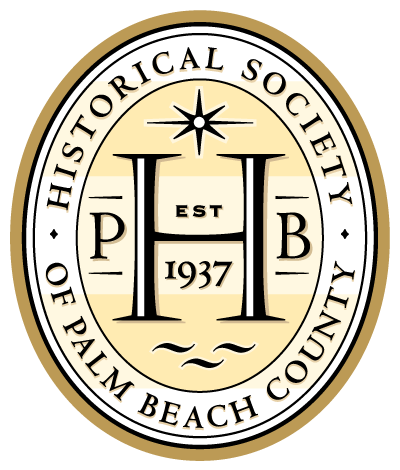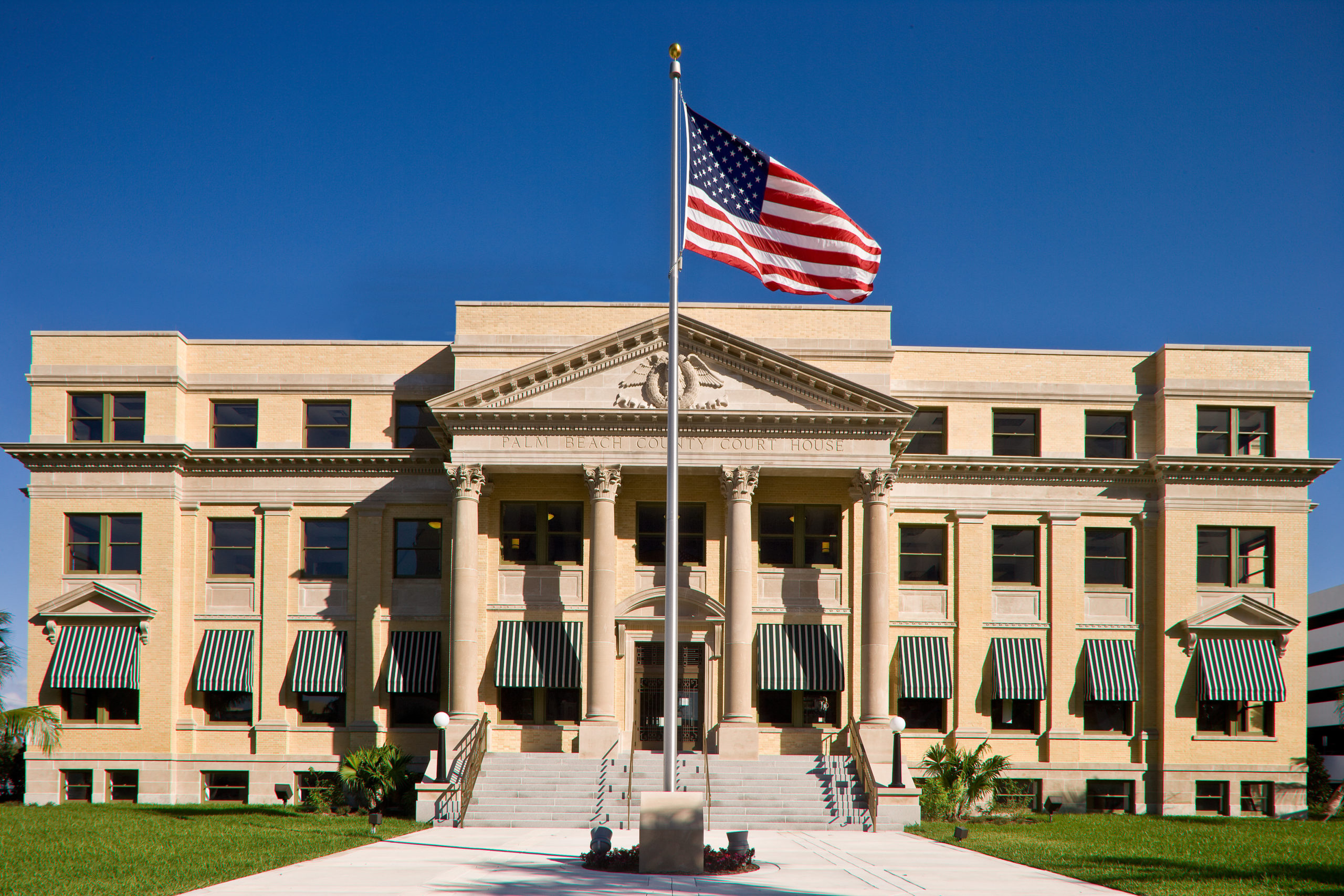
This article from the 2010 spring issue of Tustenegee is by Richard “Tony” Marconi, former HSPBC Director of Education. For proper context, please note the original publication year of all reprinted articles; they receive only minimal editing.
Would you believe that there are 19th century structures that have survived the onslaught of the massive development that has taken place in Palm Beach County in the 20th and 21st centuries? There are at least 16 buildings, most of which date between the 1880s-1890s, that have been preserved by preservation organizations, historical societies, local governments, and residents. It has been through their efforts that these gems of our past have been saved. Though these structures are not as old as some in St. Augustine, New York, Colonial Williamsburg, and other places, the buildings are some of the oldest in southeast Florida.
These 19th century structures are important to our heritage. They tell a story of our early history and provide a glimpse of how people lived over a hundred years ago in this sub-tropical climate. It is especially important to preserve the buildings, to visit them, and to educate residents and visitors alike about our county’s amazing historical past.
Sometimes, though, historic buildings are incorporated into other structures and lose their identity. While this is not the case for most of the buildings highlighted herein, it did happen to the first log cabin built on the west side of Lake Worth in present day West Palm Beach. It was the home of Reverend Elbridge Gale and his family. Gale was a retired professor of horticulture from Kansas State Agricultural College and arrived on Lake Worth in 1884. For his home, Gale constructed a log cabin at what is now the intersection of 29th Street and Poinsettia Avenue in West Palm Beach. The structure was relocated to its current address, 401 29th Street and later incorporated into the present house. Since this has occurred, it is not known just how much of the original log cabin is still standing.
These historic buildings are a source of pride for the communities that have them in their backyard. Following is a quick tour of some of those 19th century gems.
Jupiter Inlet Lighthouse: The lighthouse and its oil house were completed in 1860 and are the oldest structures in Palm Beach County. The lighthouse is located at Lighthouse Park, 500 Capt. Armour’s Way, Jupiter. The area surrounding the lighthouse has been designated by the Department of the Interior as the Jupiter Inlet Lighthouse Outstanding Natural Area, the first on the east coast and only the second in the United States.
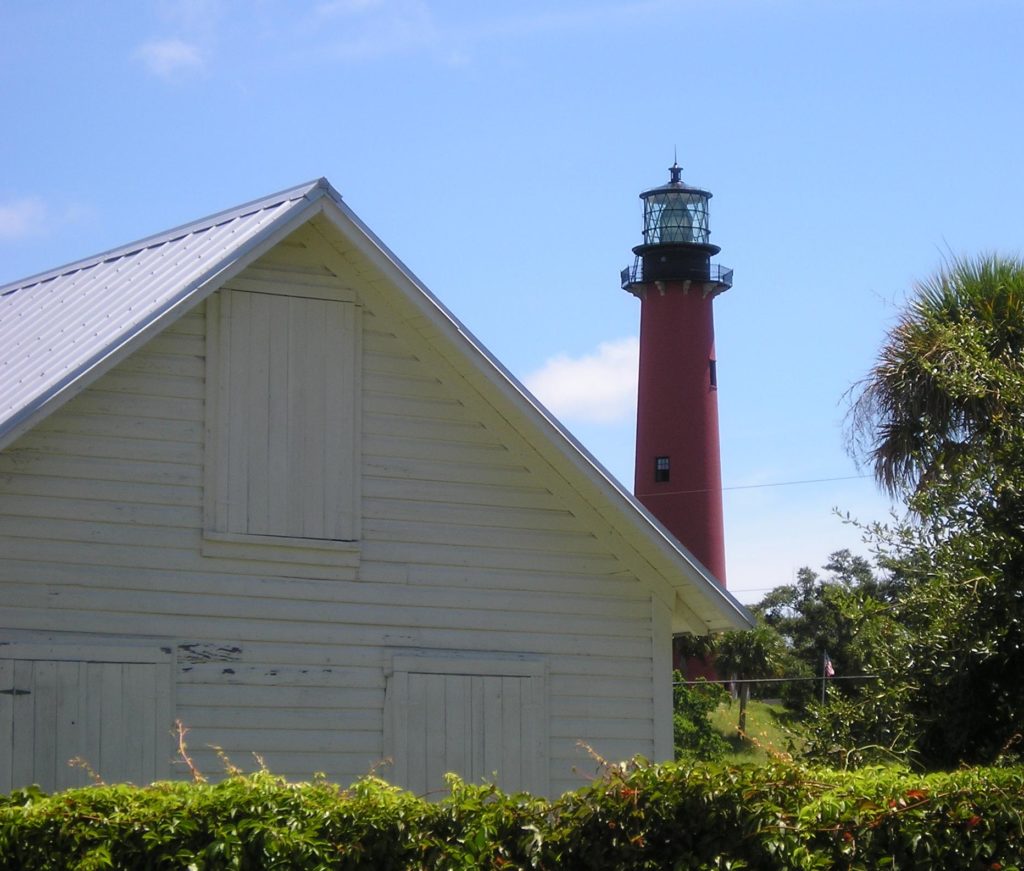
Sea Gull Cottage: This Queen Anne shingle style cottage was completed in 1886 by Denver businessman Robert R. McCormick just north of its present location. McCormick spent $10,000 for the land and another $30,000 constructing the house on the shores of Lake Worth. Crotons planted around the house gave it its original name Croton Cottage. It was Henry Morrison Flagler’s first Palm Beach winter residence. It is now located on the Royal Poinciana Chapel grounds at 58 Cocoanut Row, Palm Beach.
First Schoolhouse: The first schoolhouse in southeast Florida was constructed in 1886 on what is now Palm Beach. The wood Frame Vernacular building was located at the north end of the island about one mile north of the present day Flagler Memorial Bridge. The building is now located at Phipps Ocean Park on South Ocean Boulevard. The Preservation Foundation of Palm Beach operates an education program called the Little Red Schoolhouse at the old structure.
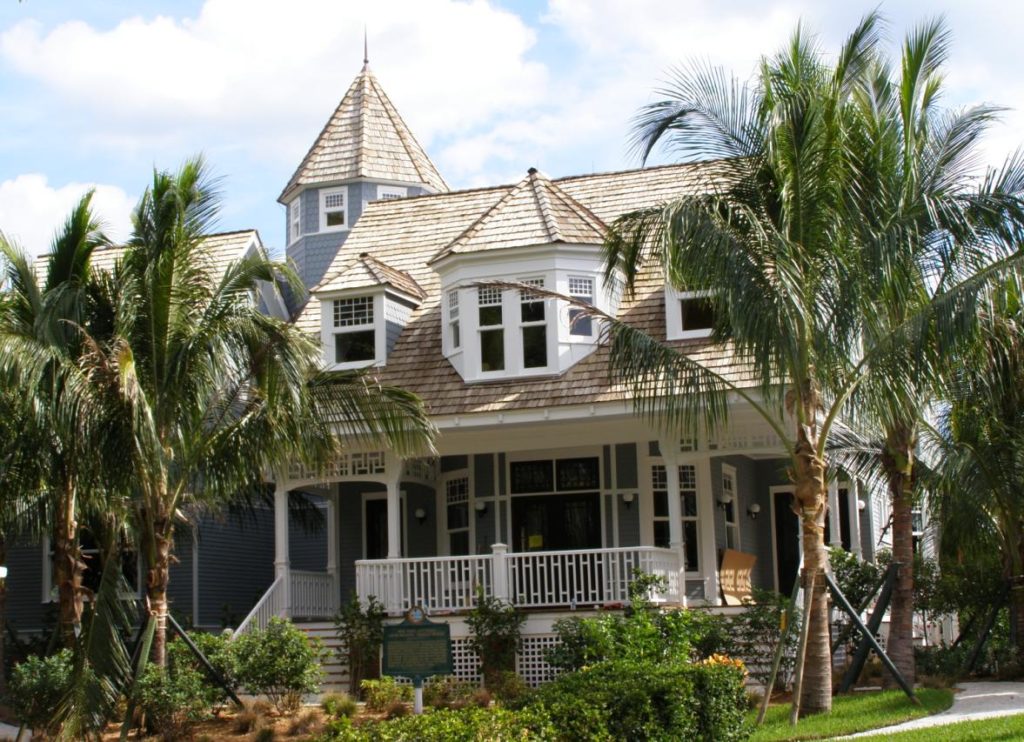
Morris B. Lyman House: This 1889 house was built by Lantana pioneer Morris Benson Lyman at 300 East Ocean Avenue in Lantana. Over the years it has been a store and housed several restaurants. It is now the main entry to the Old Key Lime House restaurant.
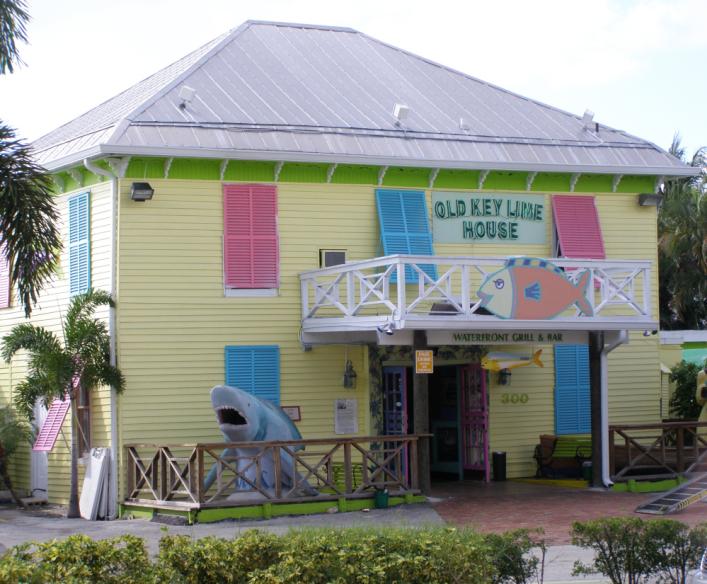
Morris Benson Lyman, the father of Lantana.
Duck’s Nest: Henry Maddock constructed his house in 1891 at the present location of 545 North Lake Trail in Palm Beach. The wood frame pre- fabricated home was shipped from New York to Palm Beach. The name of the house came from ducks that nested in the area and from Henry calling his wife “Duckie.” Duck’s Nest is still owned by members of the Maddock family.
Tindall House: The 1892 Cracker style George Washington Tindall House is currently located in Lighthouse Park in the Town of Jupiter. Tindall originally built the house in two separate sections, the main house and the kitchen house which were connected by a breezeway. The house was donated to the Loxahatchee River Historical Society in 1995.
Dade County State Bank: Built in 1893 and originally located at the west end of present day Royal Poinciana Way, Palm Beach. The first bank in our area has been moved several times over the years and is now located at the corner of 4th Street and Flagler Drive, West Palm Beach. It now houses the Palm Beach High School Museum.
The Episcopal Church of Bethesda-by-the-Sea: Located along North Lake Trail next to the Duck’s Nest on Palm Beach is the second Bethesda-By-The-Sea Church. It was built in 1894 to replace the first church building, which was smaller. The shingle style structure was de-consecrated in 1925 when the current stone church at Barton Avenue and County Road was built. The old church is now a private residence.
Royal Poinciana Tea House: The ca. 1894 tea house was originally located on the grounds of the Royal Poinciana Hotel. It has been moved several times over the decades. It is now the Holy Spirit Anglican Church at 3066 Drew Way, Palm Springs
Richard Hone House: This house dates to 1895 and is a wood Frame Vernacular and stucco style house located at 211 Plymouth Road, West Palm Beach. The house was built by Richard Hone, who owned 54 acres in present day Belair Historic District. Hone’s property was mostly a pineapple plantation. Seven years later, Hone was murdered by an unknown assailant while sitting in the dining room with his wife sitting nearby. Max Brombacher, an engineer, bought the Hone House in 1947. Today, the Brombacher family still owns the house.
St. Ann Catholic Church: The 1895 Gothic Revival style structure was designed by architect W.W. Maughlin and built at the southeast corner of Rosemary & Datura Streets and dedicated on March 15, 1896. Six years later the church was moved to its present location at Olive Avenue and 2nd Street in West Palm Beach. The church had a 75-foot bell tower and spire, which was removed in 1947 because it did not complement the other buildings in the church complex (a Romanesque Revival style church that replaced the 1895 structure and a school building). The old church is still used by the congregation. The block from 2nd Street to 3rd Street along Olive Avenue was designated as an historic district in 2003 by the City of West Palm Beach.
Masonic Temple: In 1896 the area’s first Masonic lodge (org. 1894) constructed the two story building located at 311 Clematis Street in West Palm Beach. It was the first structure on Clematis Street to have a brick veneer after the building codes had changed after two devastating fires in January and February 1896. The lodge met in the 1896 building until 1997 when the organization sold the structure and moved to a new location on Palm Beach Lakes Boulevard. The building is now the Roxi’s Pub.
Florida East Coast Railway Station: The surviving 1896 forty-foot section of the Florida East Coast Railway Station was originally located just south of Atlantic Avenue in Delray Beach on the east side of the railroad tracks. The station was once a hundred feet long. In the 1920s an additional ninety-six feet were added and then more additions were made in the 1940s. Two decades later the station closed and part of the building was demolished but preservation-minded residents of Delray Beach called for the rest of the building to be saved. In 1984 the 1920s section was destroyed by fire. The remaining forty-foot section of the 1896 building was saved and moved. In 1994 the Delray Beach Historical Society acquired the station and moved it to its present location at 200 NE 1st Street, Delray Beach and then restored it.
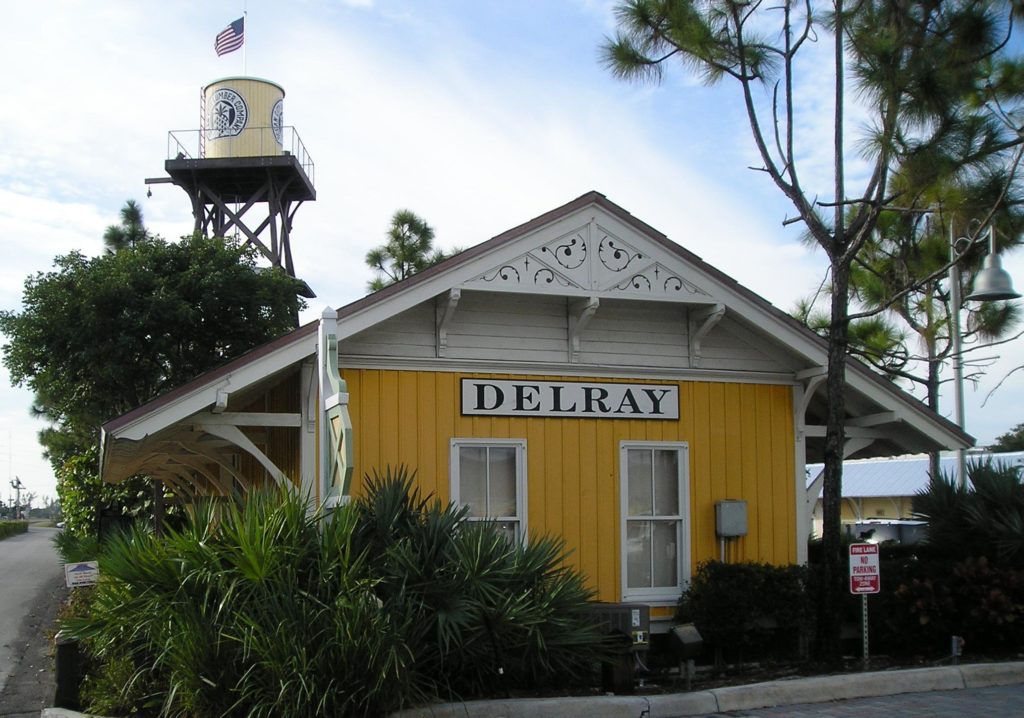
The Vicarage: The Vicarage, a Frame Vernacular structure, was the home of the vicar of The Episcopal Church of Bethesda-by-the-Sea, was built in 1897 and is located at 448 North Lake Way in Palm Beach. The two-story structure, designed by an unknown architect, is a wood frame house and has five rooms and bathrooms. A second story enclosed verandah was added later. Howard Major, a local architect of note, owned the house in the 1920s. In 1971 actor Douglas Fairbanks, Jr. purchased the Vicarage. The house was Palm Beach’s first designated landmark. It was restored by another owner and in 2006 it was reportedly sold for $7.35 million.
DuBois Pioneer Home: In 1898 pioneer Harry DuBois constructed a one-story, pine wood Frame Vernacular house on a 20-foot-high Jeaga Indian shell mound which at one time was once about 600-feet in length but is now only 90 feet long. About 1917, most of the shell was mined to pave roads in Lake Park. The house DuBois constructed was similar to those built along the New Jersey shore where he was from. The second- story was added in 1903 when DuBois’ family was growing. The ocean originally came right up to the stairs leading up the side to the shell mound. In 1921 the Jupiter Inlet was moved north 1,200 feet. The park is the result of the land fill when the mouth of the inlet was moved. The DuBois family owned the house and mound until 1971, and when Palm Beach County took it over, it was named DuBois Park. The Loxahatchee River Historical Society operates the house as the DuBois Pioneer Home museum depicting early pioneer living in Jupiter.
Royal Poinciana Chapel: The Victorian Gothic style Royal Poinciana Chapel at 60 Cocoanut Row, Palm Beach, was designed by J.W. Ingle to complement the Royal Poinciana Hotel. Construction of the chapel, on land donated by Henry Flagler, was supervised by local pioneer George Lainhart of Lainhart and Potter Lumber Company. Building began in 1897 and completed the following year. It was large enough to seat 400 people. The chapel was originally located in the gardens of the hotel, about 300 feet from its entrance. The structure was moved several times over the years but only within the general area of Whitehall and the Royal Poinciana Hotel grounds. The chapel is open and serves an interdenominational congregation.
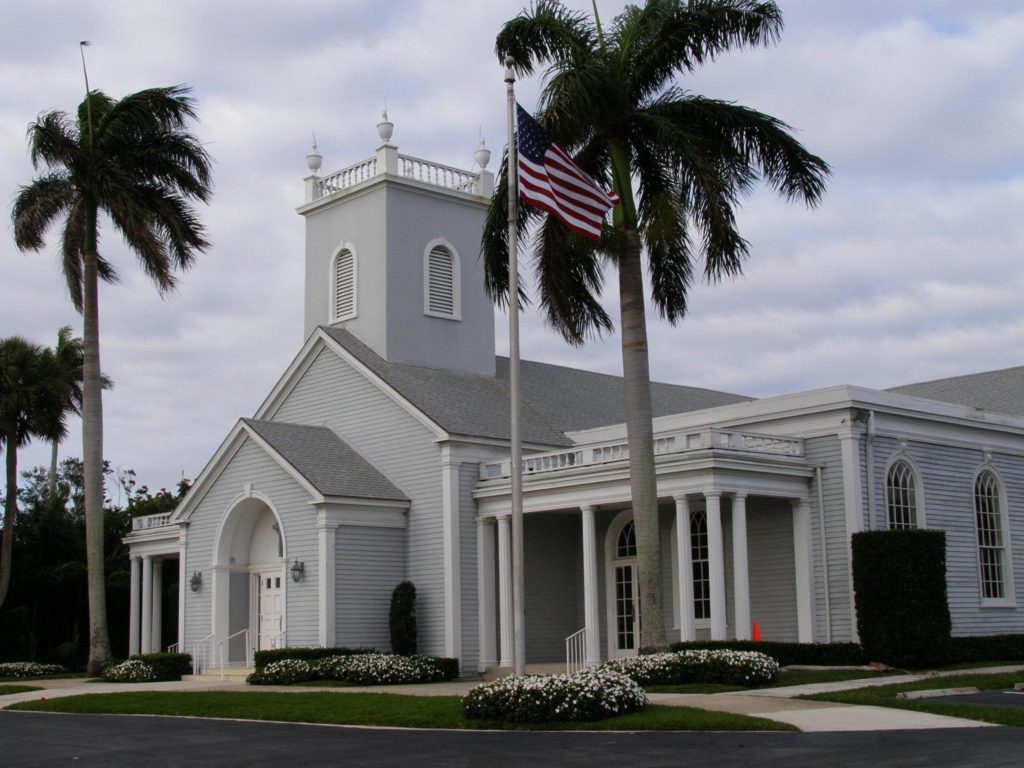
Clark House: The Frame Vernacular style house named for Coach Clark, the football coach for Delray High School, was constructed about 1898. The first owner of the house was a Mrs. Copeland. The Clark House, which is considered one of the oldest houses in Delray Beach, now houses office space. Ethel Stirling Williams (oral interview in 1960s) remembers the house in the 1890s. She came to southeast Florida with her family in 1895 when she was 5 years old. Clark House is located at 102 Swinton Avenue, Delray Beach.
Selected Sources:
Brogan, Joe. “County’s Oldest House Finds New Place to Dwell at Jupiter Museum,” Palm Beach Post, February 17, 1997.
Cary, Ives M., ed. The Loxahatchee Lament, vol. I. Jupiter: Cary Publications, 1978.
“Daughter of Lantana’s Founder Dies,” The Sunlit Road Newsletter, Historical Society of Palm Beach County, vol. XXVI, No. 5, March 1986.
Doto, Pamela. “Historic House Unveils Secrets to Restaurateur,” Palm Beach Post, November 12, 1986.
Hall, Kathryn E. Chronicles 1889-1964. West Palm Beach: Distinctive Printing, 1964.
Isgor, Sonja, “Neighbors Debate Who Has Delray’s Oldest House,” Palm Beach Post, December 31, 1992.
Johnson, John P. Delray Beach Historic Sites Survey.
Boca Raton: Historic Palm Beach County Preservation Board, 1987.
Landmark Report, The Vicarage, on file with the Preservation Foundation of Palm Beach.
Letter from Paul Maddock to Miriam Graham, January 22, 1979, Maddock file, Historical Society of Palm Beach County.
Murphy, Stephanie, “Vicarage Sells for $7.35 M,”
Palm Beach Daily News, March 3, 2006.
Preservation Foundation of Palm Beach. Flyer, “Sea Gull Cottage-The Oldest Home in Palm Beach.”
Robinson, Tim. A Tropical Frontier. Port Salerno: Port Sun Publishing, 2005.
Saunders, Carol. “Loxahatchee Guild Celebrates Tindall House move at lunch meeting,” The Jupiter Courier, 9 May 2007.
Sea Gull Cottage, Designation Report. Landmarks Preservation Commission, Town of Palm Beach, April 10, 1985.
Seventy-Fifth Anniversary 1894-1969 Harmonia Lodge No.138 F.V.A.M. Booklet, 1969, Masonic file, HSPBC.
Snyder, James D. A Light in the Wilderness: The Story of Jupiter Inlet Lighthouse & The Southeast Florida Frontier. Jupiter: Pharos Books, 2006.
St. Ann’s Catholic Church Historic District Designation, Historic Preservation Board Case No. 03-100, Application. Department of Planning and Zoning, City of West Palm Beach.
Thompson, Sandra. God’s Church Henry Flagler’s Legacy: The Royal Poinciana Chapel One Hundred Years. Stuart, FL: Southeastern Printing, 1998.
Town of Hypoluxo 50th Anniversary 1955-2005 Booklet. Hypoluxo file, Historical Society of Palm Beach County.
Wilkins, Woodrow W., Richard C. Crisson, and Richard High. Historic American Buildings Survey: Henry Maddock House (Duck’s Nest), Heritage Conservation and Recreation Service, Department of the Interior, Washington D.C., 1980.
Historical Society of Palm Beach County
You might also enjoy

A Celebration of Pride
A Celebration of Pride A Place for Pride | 50

A Portrait of Leadership | 2024
A Portrait of Leadership | Panel Discussion Women’s History Initiative,

The Evolution of Resort Wear
From the iconic prints of Lilly Pulitzer to the timeless elegance of Palm Beach’s historic hotels, Behind the Palms shares the legacy of resort wear and how Palm Beach’s influence on fashion remains strong.

